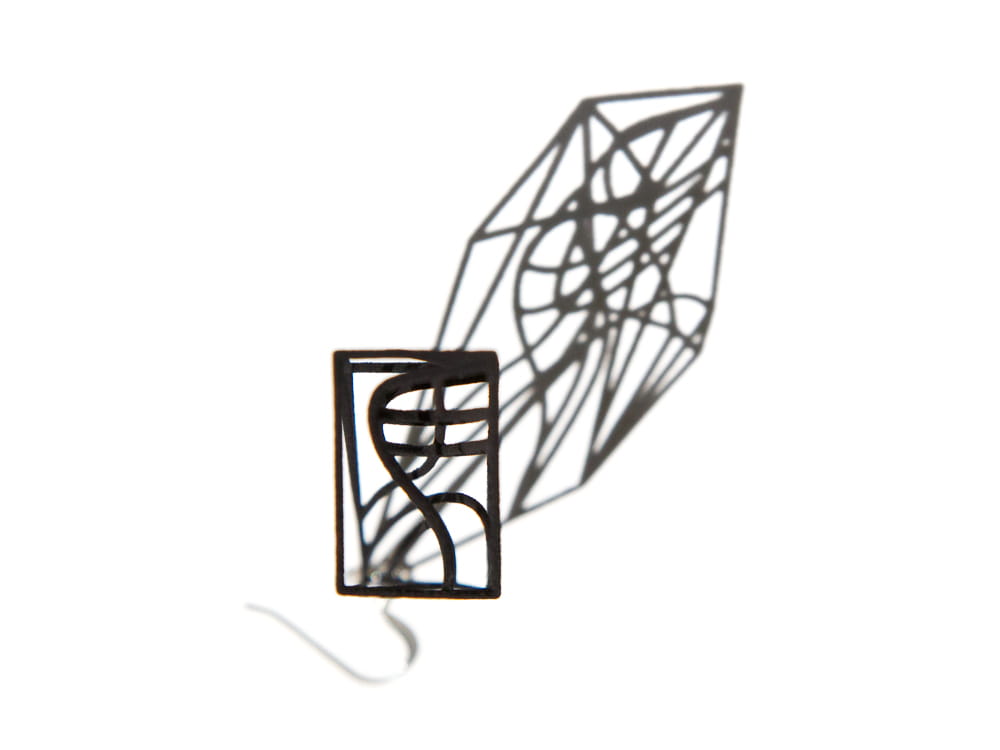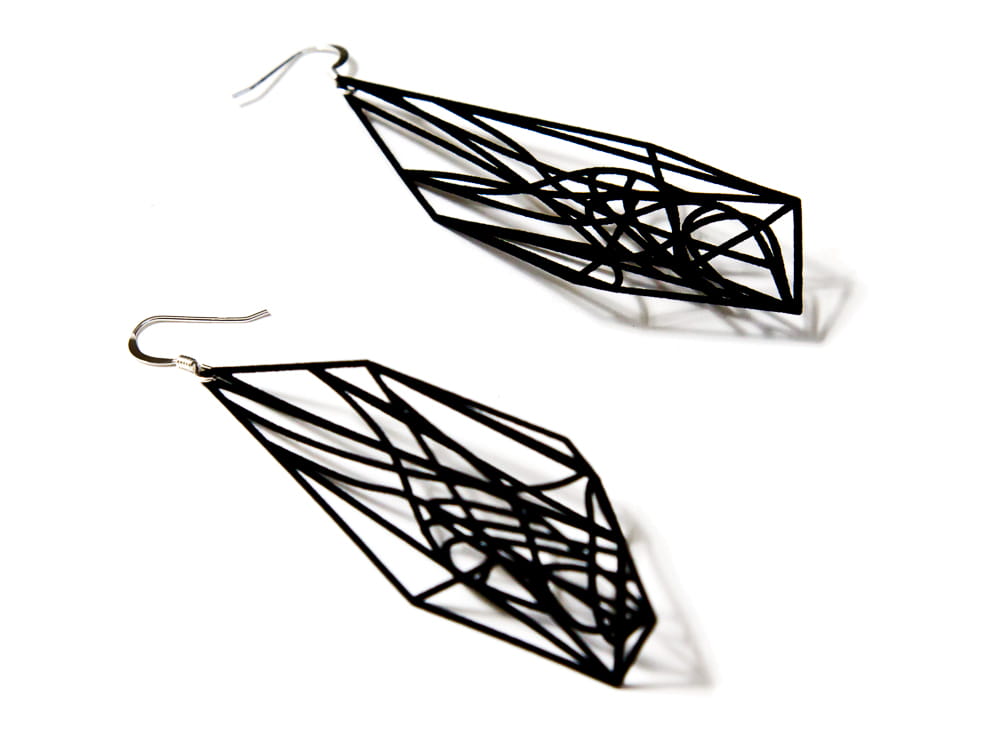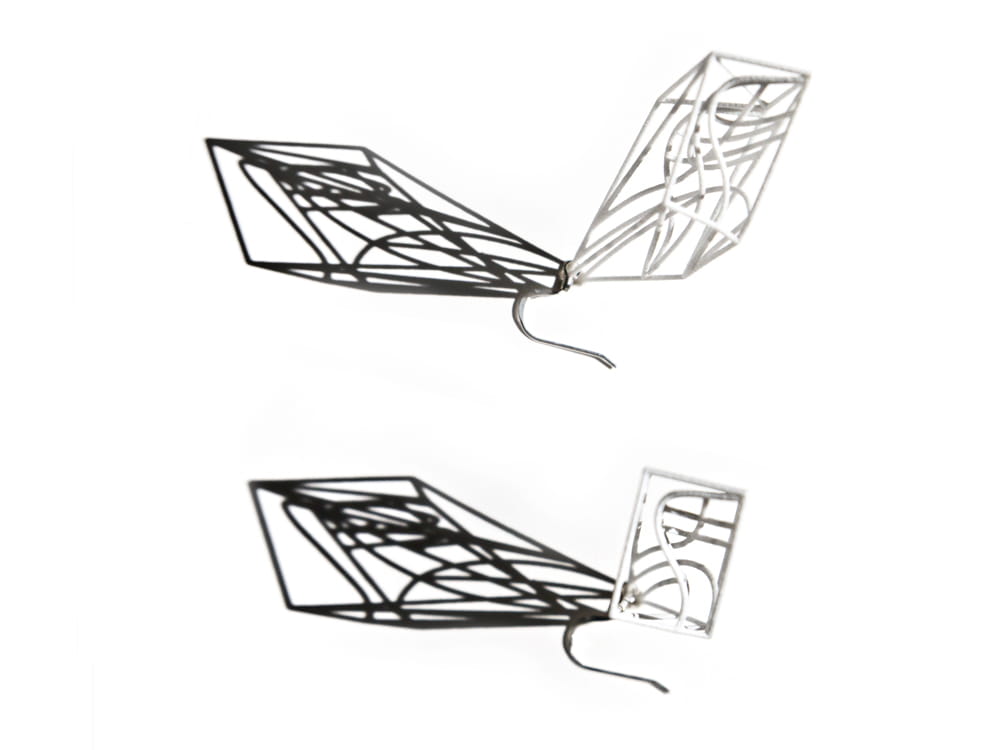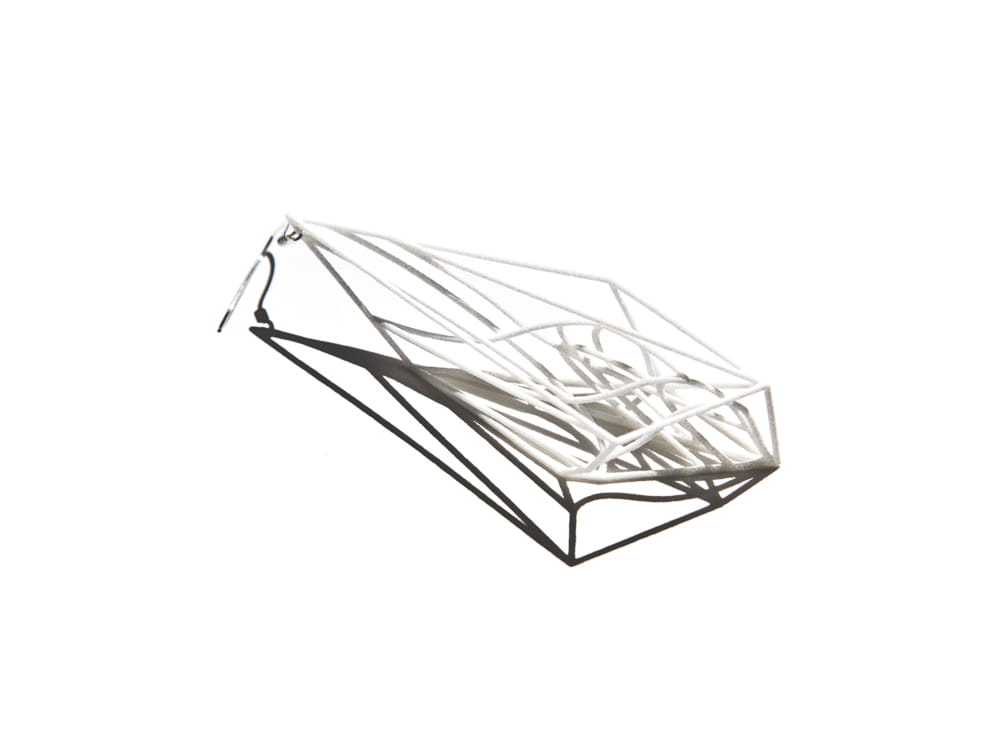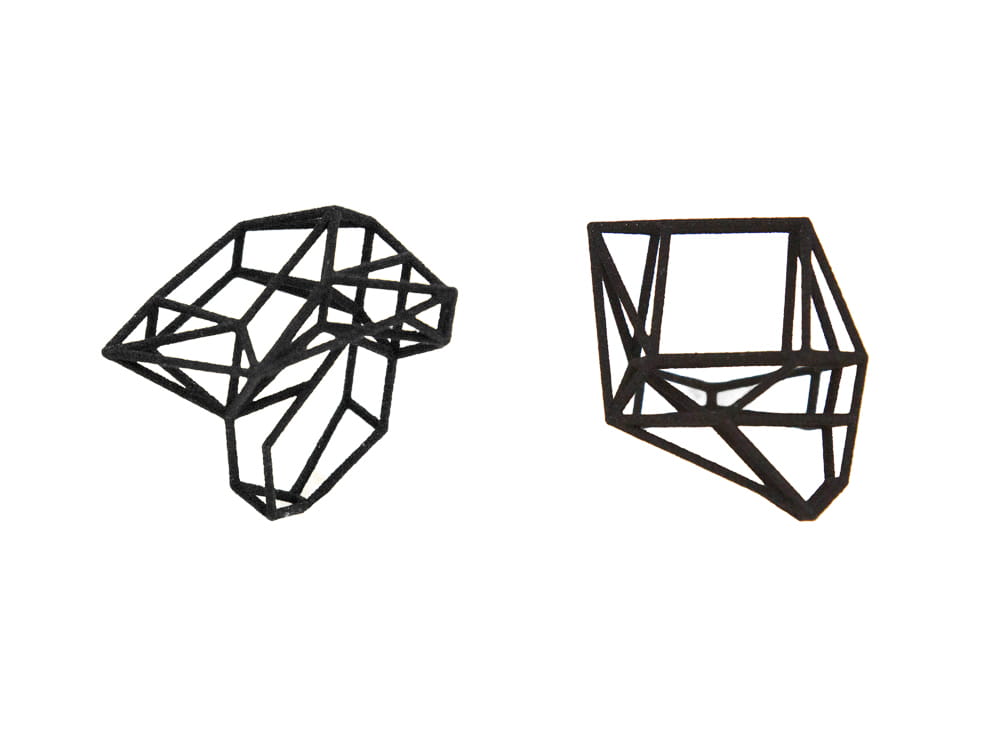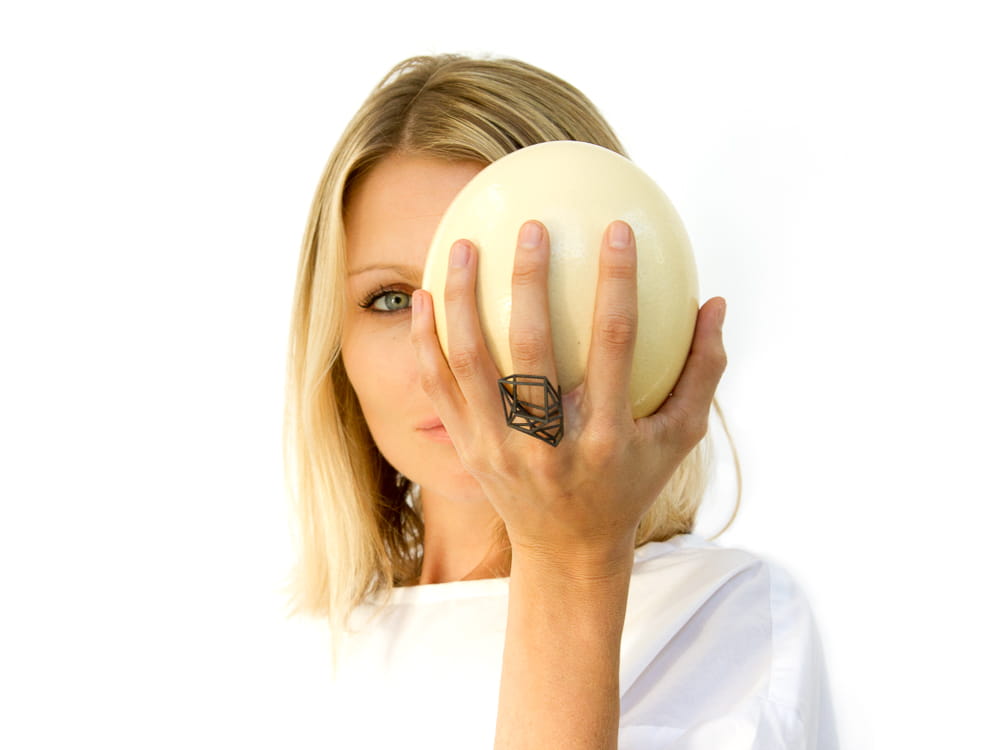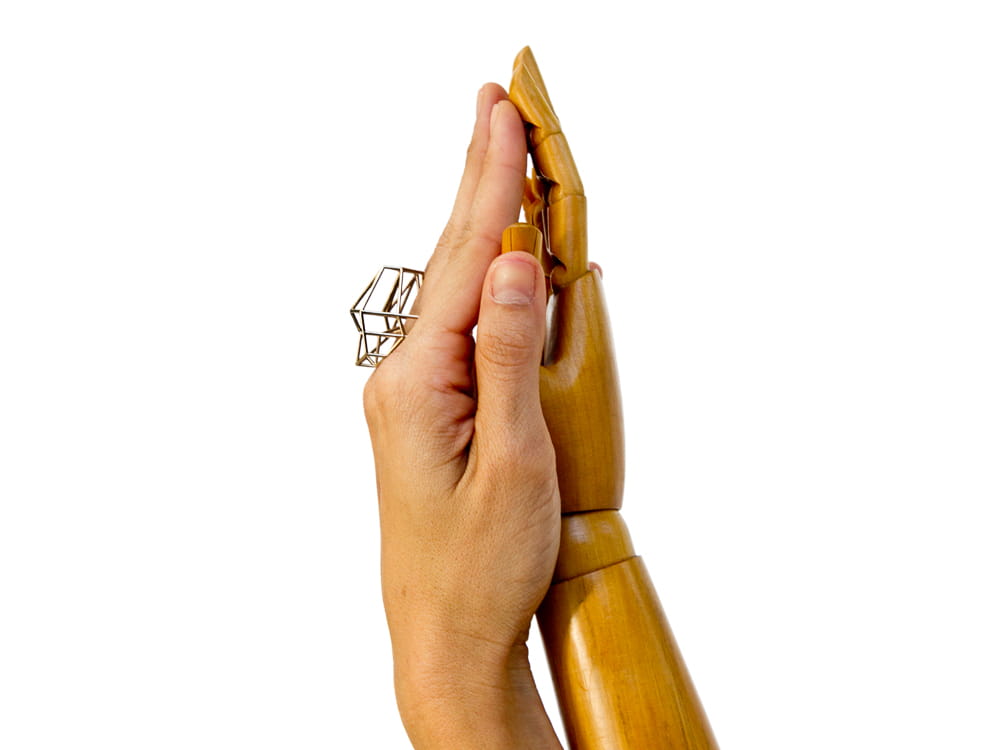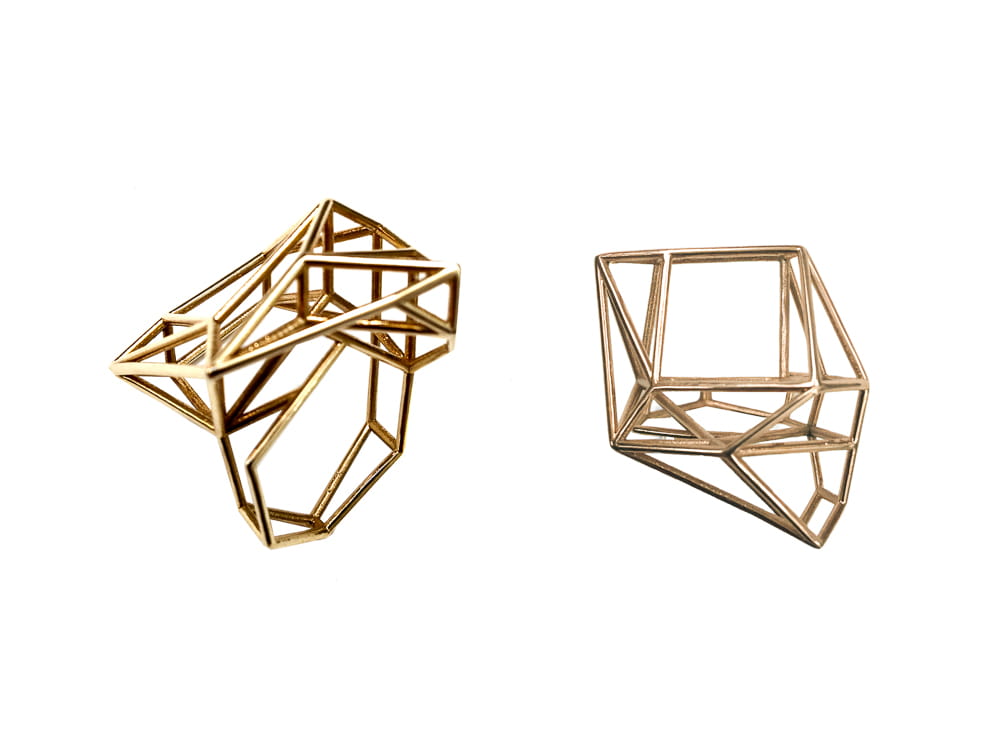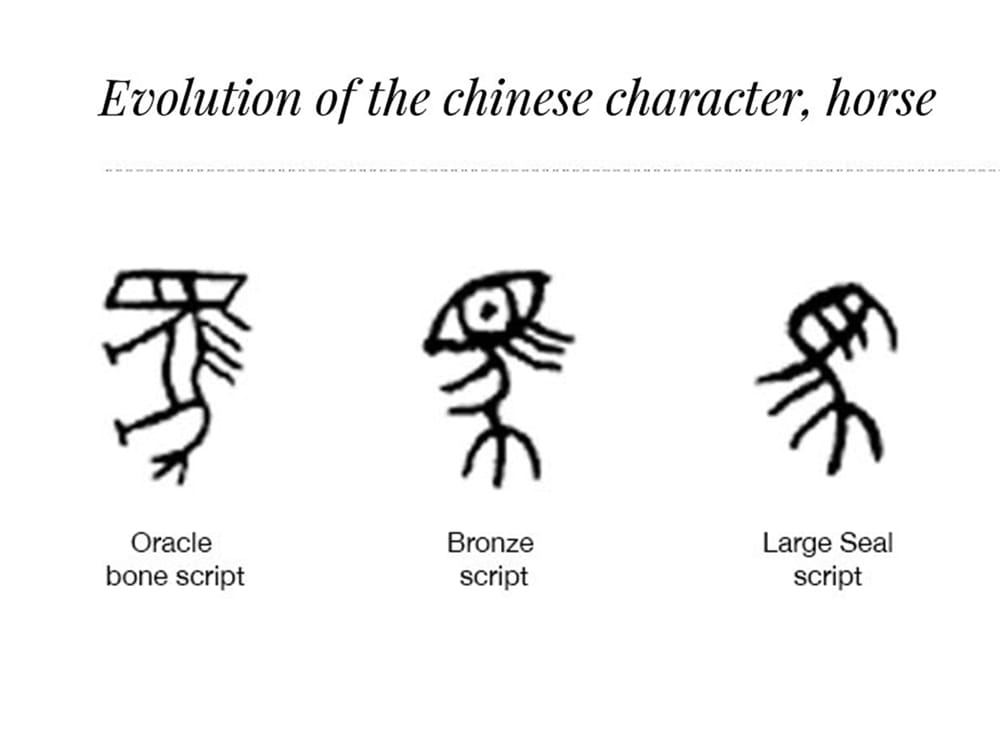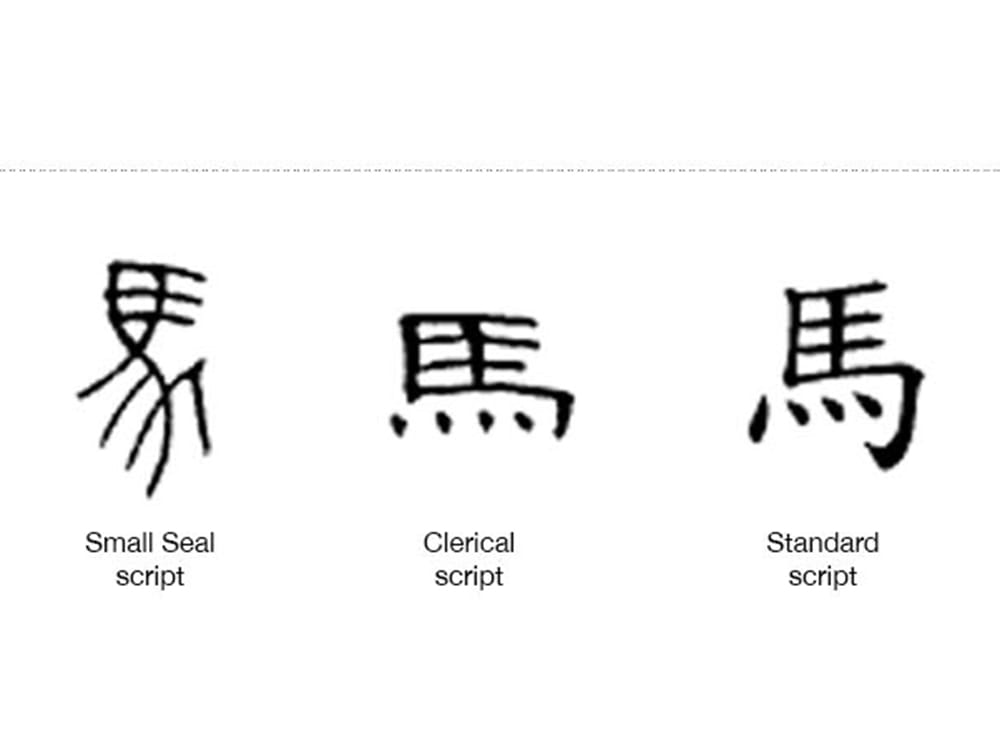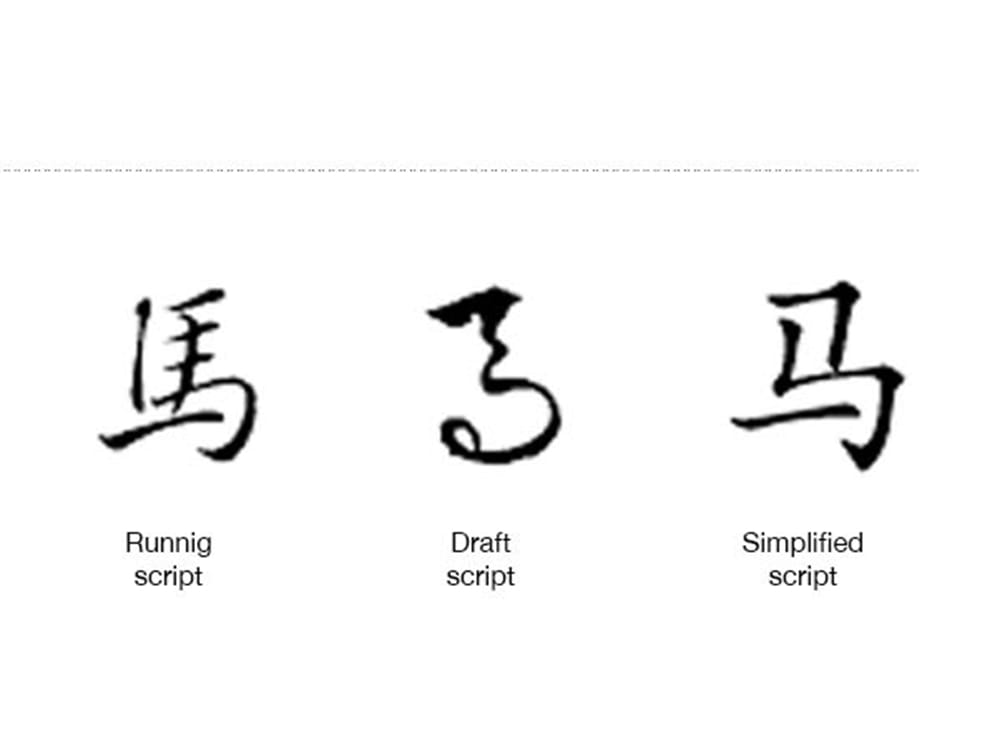Horse-Arriving Series
2014
“Horses Arrive Success Follows” is a famous Chinese idiom originating from a story in Chinese literature about the first emperor, Qin Shi Huang, who conquered and united China in 211 BC. The phrase meant, “When the troops arrive, winning the war is sure upon us.”
The “Horse Arriving” earring utilizes the anamorphic technique in its design. It embodies the character “horse” in the form of the “little seal” script*, recognizable from only one viewing angle – bottom up! When the earring is worn, the character is essentially upside down. The idea behind the upside-down character is based on a favorite Chinese pun: upside down = arriving. In this sense, the “Horse Arriving” earring is designed to bring “success” to the wearer.
The “Horse Arriving” finger ring, on the other hand, contains the character “horse” in the form of the modern simplified Chinese script. When the ring is worn with the character right side up, it means “One Horse Leading,” which could be interpreted as “you are ahead of the game.” When the ring is worn with the character upside down, it again implies “success follows.”
The earring is modeled using parametric software and 3D printed in nylon with a Selective Laser Sintering (SLS) machine.
The black steel finger ring is 3D Printed by depositing a liquid binder onto a bed of steel powder one layer at a time. The print is then removed from the printer and infused with bronze. The bronze finger ring is 3-D Printed in wax, investment (lost-wax) cast with bronze, and hand-polished.
*The anamorphic technique is a method of creating distorted images that appear normal only when viewed from a specific angle or with the aid of a unique device, such as a cylindrical mirror. This technique is widely used in art, film, and photography to manipulate perception and create optical illusions. However, it is most commonly encountered on roadways, such as in the elongated “stop” signs painted on streets. These distortions are designed to compensate for drivers’ viewing angles and driving speeds, ensuring that the message is clear and visible as they approach.
**The Little Seal Script, also known as Xiaozhuan (小篆), was used in China during the Qin Dynasty (221–206 BCE). It was standardized as the official script of the Qin state by Li Si (李斯), the chancellor of the first Emperor of China, Qin Shi Huang (秦始皇). This standardization was part of a broader effort to unify the written language across the newly unified China after the Qin had conquered the other Warring States.


